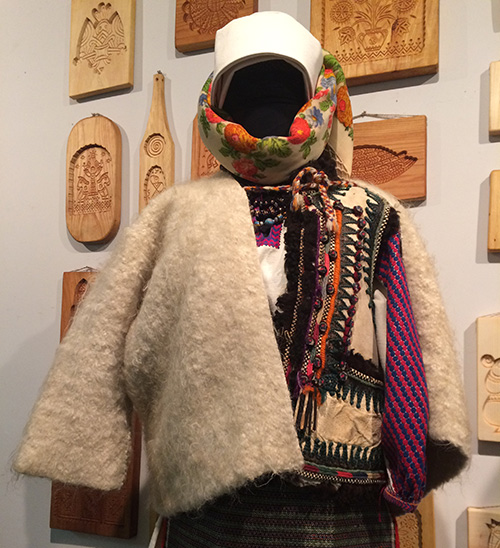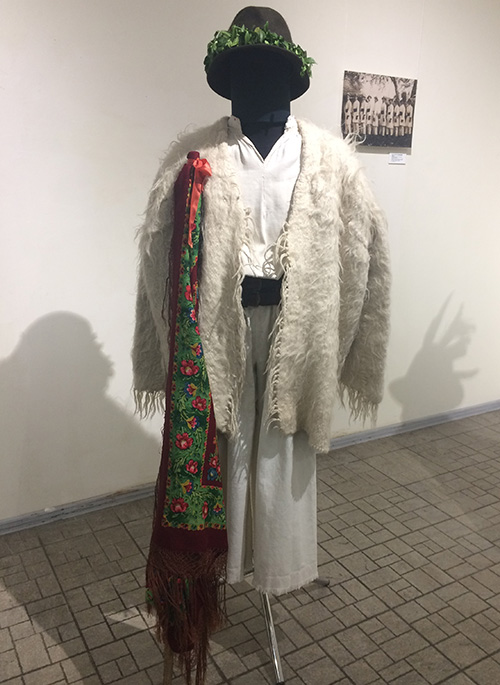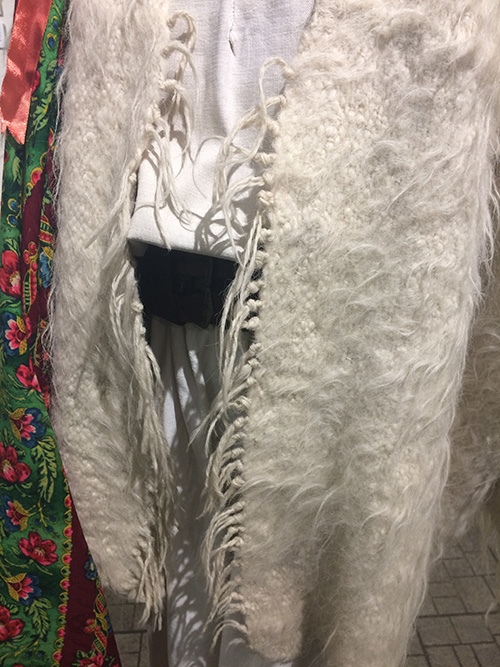 The Carpathian region of Ukraine is represented by a bunch of curious and unusual folk garments, especially outerwear. One of them is called “hunia”, and its appearance is as odd as the name. Hunia is warm, hairy, and eye-catching. And this garment is exactly what a Hutsul (Ukrainian sub-ethnic group of people who live in the Carpathians) needs. By the way, hunia has returned into fashion recently and modern Ukrainian fashionistas are ready to spend a fortune to get one. Honestly, there’s no surprise there – such natural, warm, and charming outerwear deserves to be loved.
The Carpathian region of Ukraine is represented by a bunch of curious and unusual folk garments, especially outerwear. One of them is called “hunia”, and its appearance is as odd as the name. Hunia is warm, hairy, and eye-catching. And this garment is exactly what a Hutsul (Ukrainian sub-ethnic group of people who live in the Carpathians) needs. By the way, hunia has returned into fashion recently and modern Ukrainian fashionistas are ready to spend a fortune to get one. Honestly, there’s no surprise there – such natural, warm, and charming outerwear deserves to be loved.
A hunia is one of the authentic Carpathian outer garments worn by Hutsuls. It was traditionally woven on a loom from wool. That’s why hunia was so warm and even somewhat waterproof (the outer side of the fabric had long hairs, which protected the wearer from snow and rain). This garment was woven so that the inner side of the cloth was ordinary woolen fabric and the outer side was hairy, shaggy, with long hairs sticking out.
The cut of a hunia usually was rather simple. It was loose, with long loose (but not wide) sleeves. Sometimes, the sleeves were false and sometimes functional. The length was diverse – from below the waist to about mid-calf. This outerwear typically didn’t have buttons or fasteners, it was either thrown over the shoulders and left open or tied with a cord at the neck.

Thin and short female hunia. This one is authentic, it’s from around the late 19th – early 20th century
This outer garment was used by both men and women. And each family had several hunias – up to 10. There were day-to-day and festive hunias – festive ones were white, while daily coats were gray or, rarer, black. Usually, there were no embellishments on a hunia – you simply couldn’t embroider or add applique or print to this type of fabric.
Also, some hunia coats were thinner and less shaggy – they were perfect for the warmer season (in the mountains, you need outerwear even in summer), while winter garments were hairier and thicker.
But this outerwear wasn’t just a piece of clothing used only for warming up. It was also a ceremonial item that served as a significant part in traditional rituals and folk activities. For example, at a Hutsul wedding, the newlyweds danced on a hunia laid on the floor – for good luck and well-being. Babies were wrapped in a hunia after the ritual of baptism. Shepherds loved a hunia because its long slivers of wool protected them from wolfs – the animals couldn’t bite through such a hairy and thick fabric. This outer garment was a symbol of wealth, health, and Hutsul heritage.


Shaggy hunia, part of the groomsman’s attire from Transcarpathian region of Ukraine (the very western part of the country), the beginning of the 20th century
In the past, hunia was an entirely Carpathian traditional outerwear. But recently, it has become a fashionable garment in Ukraine, not only among Hutsuls but among Ukrainians from various regions of the country. Some artisans and clothing manufacturers produce contemporary hunia coats – sometimes, they are almost accurate replicas of folk garments, in other cases, they’re stylized winter coats. Modern hunias are not always white or gray (though, most often they are), but can be blue, brown, orange, pink, etc. This garment looks very unusual, that’s why it became trendy again in the 21st century.
Here’s a rather detailed, interesting, and very colorful video about hunia and how it is made by the local craftswomen. The process is mesmerizing! They throw the fabric in a waterfall to make it smoother and softer!



Carpathian Mountains